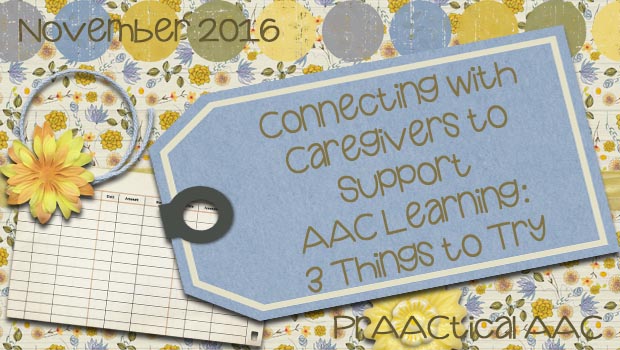Connecting with Caregivers to Support AAC Learning: 3 Things to Try

One of the best things about providing AAC services in a university-based clinic is that we have regular contact with parents and other caregivers. That gives them the opportunity to observe the session, or, better yet, become an active participant. This allows us to talk to them about issues with the AAC system and help them develop the skills and routines to support AAC learning outside the therapy session.
Most practitioners, however, don’t have this luxury. How can we impact AAC use outside of therapy and the classroom when we have infrequent face-to-face time with families and other caregivers? Here are some things to try.
- Video: Make a short screencast using free tools (like Jing, from Techsmith). In less than 10 minutes, you can make a recording of your computer screen and narrate it with implementation tips and information, then upload it, and share the link with families. For more information on that, check out the handout from the ISAAC Preconference Workshop on 21st Century Practitioners that Chris Bugaj and I did in Toronto.
- Text: It seems like everyone has a smartphone these days, so consider connecting with families by text messages. Tools like Remind, designed for school-friendly communication, allow you to send messages to individuals or groups without revealing your phone number. You can send a quick tip, send words of encouragement, ask a question, or share a link to a video or other resource.
- Social Media: Connect them to family-friendly Facebook groups where there are discussions of relevant tools, strategies, and implementation ideas. If you haven’t been involved in some of these groups, you may be surprised at the level of support and expertise.
Connecting with families when we don’t actually see them is difficult but not impossible. Exploring new technologies can be a great way to expand the learning outcomes of individuals who use AAC.
Do you have tools or strategies that you use to stay connected with families and help grow their ability to support AAC? We’d love to hear about them.
Filed under: Featured Posts, PrAACtical Thinking
This post was written by Carole Zangari
